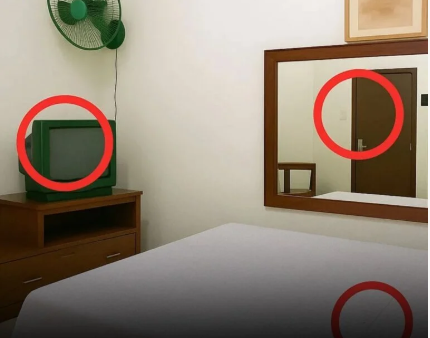Gallbladder removal, or cholecystectomy, is one of the most common surgeries in the U.S., with over 700,000 procedures performed annually, per the National Institute of Diabetes and Digestive and Kidney Diseases (NIDDK). Often prompted by gallstones or chronic inflammation, this routine operation leaves many wondering: what happens when this small but mighty organ is gone? From digestion changes to recovery tips, here’s a comprehensive guide to life without a gallbladder—and how to feel your best post-surgery.
The Gallbladder’s Role: A Digestive Powerhouse
Tucked beneath your liver, the pear-shaped gallbladder stores bile, a fluid produced by the liver to break down fats in the small intestine. When you eat a fatty meal, the gallbladder releases concentrated bile to aid digestion, ensuring fats are emulsified for nutrient absorption. Despite its importance, the gallbladder isn’t essential—your liver continues producing bile, which flows directly into the intestines post-removal. But this shift can bring temporary changes that require adjustment.
Why Remove the Gallbladder? Common Issues
Gallbladder problems often necessitate surgery due to pain or health risks. The Cleveland Clinic outlines key conditions:
- Gallstones: Hardened bile deposits, ranging from sand-like grains to golf ball-sized stones, affect 10–15% of Americans, per NIDDK. They can block bile ducts, causing sharp pain, nausea, or infection.
- Cholecystitis: Inflammation, often from a lodged gallstone, leads to severe abdominal pain, fever, and sometimes emergency surgery.
- Gallstone Pancreatitis: A gallstone blocking the pancreatic duct can inflame the pancreas, requiring hospitalization.
- Gallbladder Cancer: Rare but serious, it may present as persistent pain or jaundice, necessitating early medical evaluation.
Symptoms like upper right abdominal pain, pain radiating to the shoulder, jaundice, nausea, fever, or light-colored stools signal trouble, per the Mayo Clinic. If untreated, these issues can lead to complications, making cholecystectomy a life-saving option.
What Happens After Gallbladder Removal?
Without a gallbladder, your liver still produces bile, but instead of being stored for targeted release, it drips continuously into the small intestine. For most, this adjustment is manageable, with 80% of patients resuming normal digestion within weeks, per a 2024 Journal of Gastrointestinal Surgery study. However, some experience temporary side effects:
- Fat Digestion Challenges: The steady bile trickle is less effective at breaking down large amounts of fat, potentially causing discomfort after greasy meals. About 10–15% of patients report bloating, gas, or abdominal pain initially, per Healthline.
- Bile Acid Diarrhea: Excess bile in the intestines can irritate the gut, leading to loose stools in 5–10% of cases, per the American College of Gastroenterology. This often resolves within months but may require medication like cholestyramine.
- Nutrient Absorption: Rarely, reduced bile efficiency can affect fat-soluble vitamin (A, D, E, K) absorption, though supplementation is seldom needed, per WebMD.
Most patients adapt within 6–12 weeks, with digestion stabilizing as the body recalibrates. On X, @HealthJourney22 shared, “Had my gallbladder out last year—first month was rough with fatty foods, but I’m back to normal now!” However, @GutWoes warned, “Still get diarrhea six months post-op. Wish I’d known about low-fat diets sooner.”
Recovery Tips for a Smooth Transition
Life without a gallbladder is highly manageable with the right approach. The Mayo Clinic and Cleveland Clinic offer evidence-based strategies to ease recovery:
- Go Low-Fat: For at least 1–2 weeks post-surgery, avoid fried foods, fatty sauces, and high-fat meats. Opt for lean proteins (chicken, fish), vegetables, and whole grains. A 2023 Nutrition Reviews study found low-fat diets reduce digestive discomfort in 90% of post-cholecystectomy patients.
- Boost Fiber Gradually: Fiber aids regular bowel movements, but increase intake slowly to prevent bloating. Try oats, apples, or carrots, aiming for 25–30 grams daily, per USDA guidelines.
- Eat Smaller, Frequent Meals: Five small meals daily ease digestion compared to three large ones, reducing bile overload, per Healthline.
- Stay Hydrated: If diarrhea occurs, drink water, herbal teas, or electrolyte-rich broths to replenish fluids. Avoid caffeine and sugary drinks, which can worsen symptoms.
- Monitor Symptoms: Persistent diarrhea, pain, or jaundice warrants a doctor’s visit to rule out bile duct issues or post-cholecystectomy syndrome, affecting 5–40% of patients, per NIDDK.
Start with clear liquids (broth, gelatin) post-surgery, progressing to bland solids like rice or bananas before reintroducing a balanced diet. Long-term, most return to their usual eating habits, though some prefer lighter meals to avoid discomfort.
Long-Term Outlook: Thriving Without a Gallbladder
The human body’s adaptability shines post-cholecystectomy. Over 95% of patients lead healthy lives without major dietary restrictions, per a 2024 American Journal of Surgery study. Weight management is key, as rapid weight gain can stress digestion, while gradual weight loss (if needed) supports recovery. Regular check-ups ensure optimal liver and digestive health.
On X, @PostOpTips shared, “Gallbladder gone 2 years ago. Smaller meals and less pizza = no issues. Feel great!” Conversely, @HealthStruggle noted, “Still adjusting to no gallbladder. Fiber helps, but fatty foods are my enemy.” These varied experiences highlight the importance of personalized adjustments.
When to Seek Help
Contact your doctor if you experience:
- Severe abdominal pain or fever, indicating possible complications.
- Persistent diarrhea lasting over a month.
- Jaundice or dark urine, suggesting bile duct issues.
Early intervention prevents rare but serious issues like bile leaks, affecting less than 1% of patients, per WebMD.
Embracing Your New Normal
Gallbladder removal may feel daunting, but with mindful eating and patience, most people thrive. To support your journey:
- Track Your Diet: Use apps like MyFitnessPal to monitor fat intake and identify trigger foods.
- Join Support Groups: Connect with others on platforms like Reddit’s r/gallbladders or Facebook groups for tips and encouragement.
- Consult a Dietitian: A professional can tailor a post-surgery meal plan, especially if diarrhea persists.
- Share Your Story: Comment below with your recovery tips or experiences to help others navigating this change.
Life without a gallbladder is a testament to your body’s resilience. With small tweaks, you can savor your favorite foods and feel as vibrant as ever.
Have you had your gallbladder removed? What tips helped your recovery? Share in the comments below!



